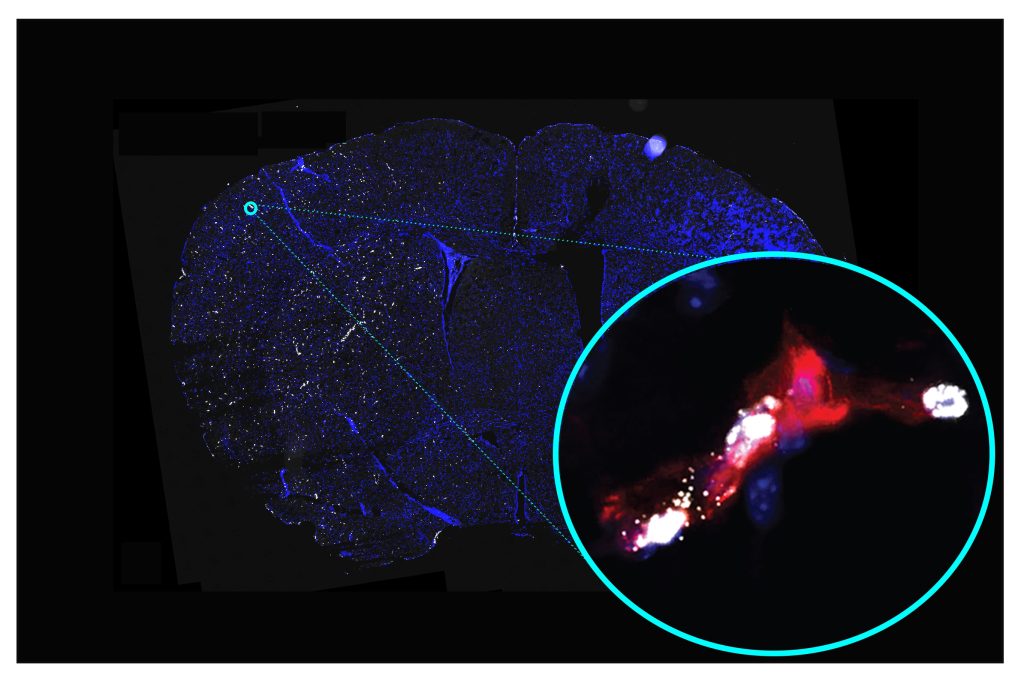Researchers identify potential new stroke treatment targets
When blood flow to a portion of the brain is stopped or reduced by a hemorrhage or obstruction, a stroke results. Although some stroke survivors recover completely, many still struggle with long-term repercussions and are at increased risk of having another stroke.
Brain damage following a stroke is thought to be a result of changes in small blood arteries that exist in addition to the blockage.

In the injured small blood arteries in the brain, a recent study identified multiple changes in gene activity that may serve as targets for pharmacological therapy to enhance stroke recovery.
An artery in the brain becomes clogged or bursts, resulting in a stroke. Beyond the blockage or bleeding, the brain cells are starved of oxygen and nutrients and suffer damage or degeneration. Researchers have been looking for strategies to lessen damage after a stroke and hasten recovery.
Researchers from Weill Cornell Medicine have now discovered alterations in gene activity in small blood arteries after a stroke. The results imply that these alterations could be targeted with current or upcoming medications to lessen brain damage or enhance stroke recovery.
The research was released in PNAS. Weill Cornell Medicine assistant professor of pathology and laboratory medicine and the lead author, Dr. Teresa Sanchez, told:
“By providing a knowledge platform of the molecular alterations in the cerebral microvasculature, our study has improved our understanding of the pathophysiology of stroke. This is critical to developing novel therapeutic strategies for this devastating condition.”
Stroke symptoms
The majority of strokes are ischemic strokes, in which a blood clot obstructs a blood vessel leading to the brain. This prevents nutrition and oxygen from reaching brain cells.
Immediate signs could be:
- bewilderment and difficulty speaking
- Headache, maybe accompanied by dizziness or nausea
- numbness or a lack of movement in certain body areas, especially on one side
- vision issues
- Walking difficulties, a loss of coordination, and vertigo.
It’s crucial to get therapy and a diagnosis right away to reduce long-term damage. Many stroke victims, however, continue to experience physical and psychological after effects.
Over 795,000 people experience a stroke each year in the United States. Also, the condition is one of the main causes of long-term disability. This is according to the Centres for Disease Control and Prevention (CDC).
Long-term damage from a stroke
Despite the fact that only 10% of stroke survivors experience a near-complete recovery, survivors frequently experience a variety of symptoms, such as:
- weakness or paralysis on one side of the body.
- thinking, memory, and speaking issues.
- difficulty swallowing and chewing.
- issues controlling one’s bowels and bladder.
- Depression.
Inflammation and long-term alterations in the brain’s small blood arteries, result in constrained blood flow to brain cells and leaking over the blood-brain barrier. They are the root of many of these symptoms.
In a recent study, gene activity in mouse cerebral microvasculature after a stroke was observed to vary. Similar modifications were found in stroke patients from people as well.
Gene activity changes following a stroke
The researchers discovered 541 genes whose activity was altered similarly in mice and people after stroke, and they also discovered many clusters of genes with various roles.
According to Dr. Teresa Sanchez, “Our work has also clarified the shared transcript alterations between human and mouse stroke and identified common changes in pathways associated with vascular/endothelial dysfunction, sphingolipid metabolism, and signalling.“
They discovered genes linked to vascular disease, general inflammation, brain inflammation, and the specific form of vascular malfunction. This results in leaky cerebral microvessels. The blood-brain barrier, which controls the flow of chemicals between the blood and brain cells, is weakened as a result of these leaky arteries.
The activity of molecules that regulate the blood-brain barrier was shown to vary after stroke, according to the researchers.
Dr. Sanchez stated that a stroke causes “robust changes in the genes regulating the blood-brain barrier and endothelial activation, i.e. upregulation of genes causing blood-brain barrier leakage and downregulation of genes protecting the blood-brain barrier.“
Additionally, they found that after a stroke, there was a disruption in the activity of genes that regulate sphingolipid levels, which are fat molecules involved in a broad variety of biological activities, including inflammation.
Potential therapeutic routes
Some of these molecular alterations, according to the researchers, might make for fresh medication therapy targets. They draw attention to the elevated sphingolipid concentrations in the cerebral microvasculature and hypothesize that sphingolipid targeting may be therapeutic after stroke.
We questioned Dr. Sanchez on the possibility of using medicines to either prevent these changes or undo the harm already done.
“Since endothelial dysfunction is a major contributor to stroke and, concurrently, stroke-induced cerebral ischemia causes additional injury to the endothelium, which further compromises cerebral blood flow and exacerbates brain injury,” she said.
According to Dr. Allder, the discoveries could influence research into other neurological conditions:
“I can see how it might make post-stroke treatments more accessible, but I also see how it might open up new treatment options for dementia and post-brain injuries, particularly repetitive brain injuries.”
More research is required
Therefore, the results may possibly suggest novel therapeutic avenues, but Dr. Iyer emphasised the need for more study:
The key drawback of this research is that human genome and transcriptome models aren’t usually transferable from mouse models. However, this study reveals a hitherto unrecognised cellular signalling route that is unquestionably ready for further study.
Preclinical research is currently being conducted by Dr. Sanchez and her team to see whether it would be advantageous for stroke patients to reverse some of the specific microvascular abnormalities that were observed in their study. They are doing this by employing candidate medications or genetic techniques.
REFERENCES:
- https://www.medicalnewstoday.com/articles/scientists-find-potential-new-targets-to-treat-stroke
- https://news.weill.cornell.edu/news/2023/04/study-of-cerebral-blood-vessels-uncovers-potential-new-drug-targets-for-treating-stroke
- https://www.techexplorist.com/cerebral-blood-vessels-identifies-potentially-new-drug-targets-treating-strokes/58977/
For Stroke medications that have been suggested by doctors worldwide are available here https://mygenericpharmacy.com/index.php?cPath=77_99